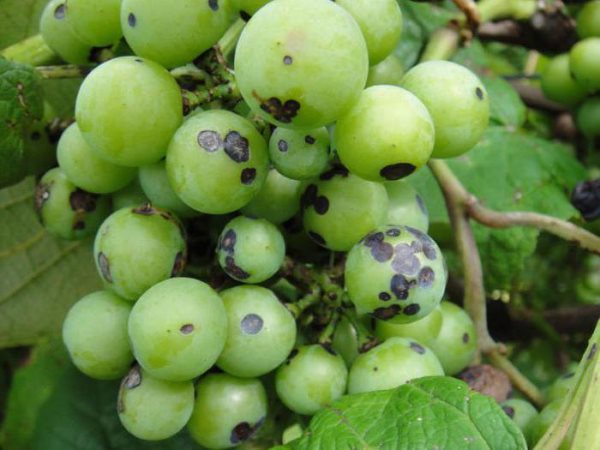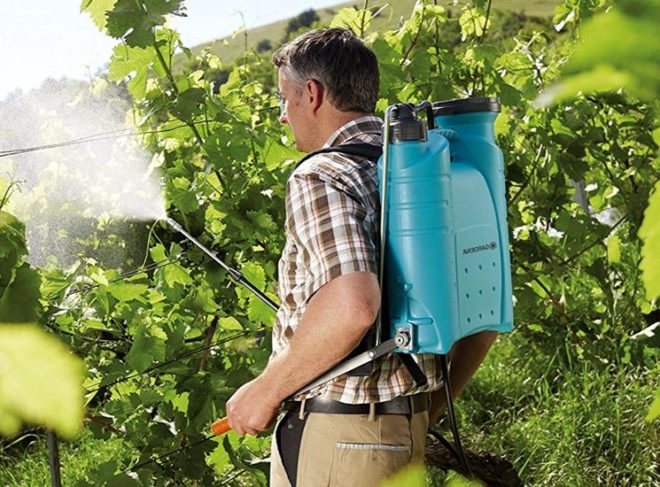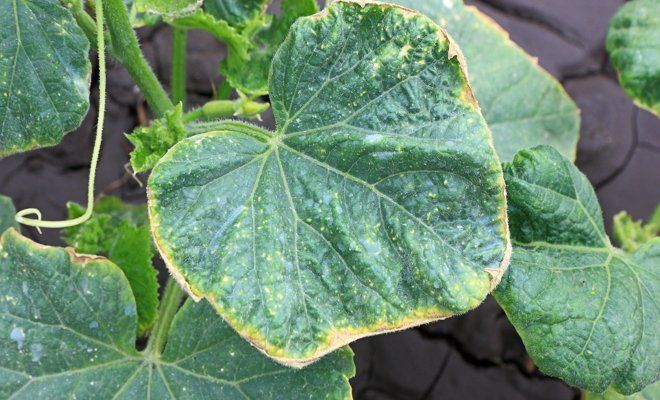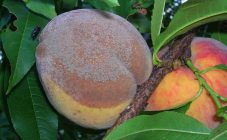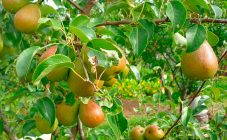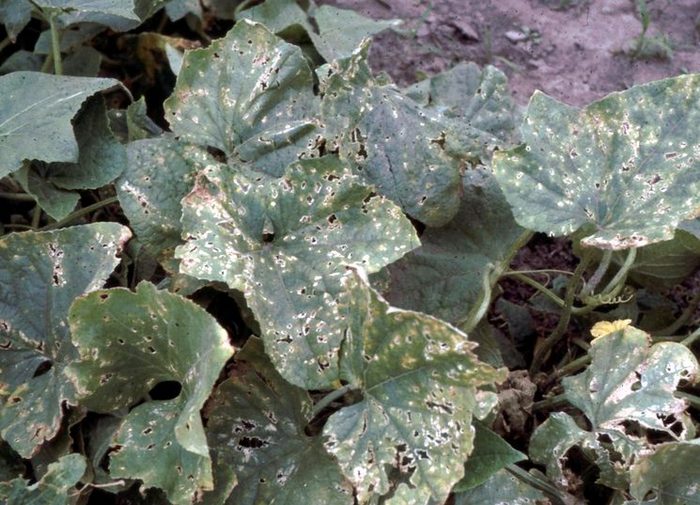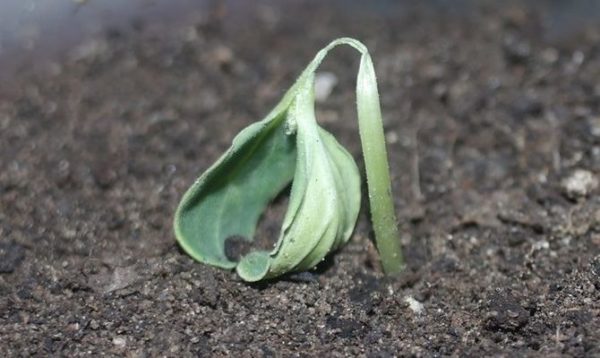Content:
The vine, like any other garden crop, is susceptible to the negative effects of diseases and pests. For a winegrower, if he wants to grow grapes for his own needs, and especially for sale, it is important to determine the composition of the measures with which you can save the vine and not lose the harvest. Delay in this case may threaten the destruction of all landings.
External signs of damage to grapes by diseases and pests
Distinguishing a diseased plant from a healthy one is very simple. If the foliage has a uniform green color without spots of other shades, the leaf plate is even without bumps and dried areas, the bunches are whole, the berries are of the same color without spots and rot, then there is an ideal vine in front of the gardener. In all other cases, there is an initial stage (or already running) of some kind of disease or pest damage.
Grapes: leaf diseases and treatments
The vine is affected not only by viruses and bacteria, but also by fungi. Each disease has its own typical manifestations, easily recognizable even by an inexperienced gardener. For example, grape leaves are covered with pimples. How to treat grapes, it becomes clear from the outside.
The most common fungal infections are:
- Mildew (downy mildew). Leaves, shoots, and even clusters suffer from it. The danger is represented by spores of the fungus, which are easily carried through the air and spread to healthy vines from the dry leaves of affected plants. First, small scattered yellow oily spots appear on individual leaves, then they quickly move to neighboring ones. A bunch of grapes becomes covered with brown spots, rots and falls off. A heavily affected plant begins to look worse and worse, and most likely it will not survive the winter, it will die.
- Oidium (powdery mildew). Disease of grapes manifests itself in the form of an ashy bloom on leaves and berries. All parts of the plant are gradually covered with molds. Grape leaves dry and fall first, then the berries turn brown and crack. How to deal with powdery mildew on grapes is well known.
- Anthracnose. It manifests itself in the form of reddish spots with a dark purple border, arising on foliage, and then on berries. All affected parts of the plant turn black and dry out.
- Black spot. Initially, black dots appear along the veins on the leaf blade. Then they grow into spots. The sheet curls, cracks. The same fate awaits shoots and berries. A single plant can hurt, but without treatment, the disease will cover the entire garden.
- Scab. Olive spots appear first on the leaves, which quickly become covered with a velvety bloom to the touch. The foliage of the grapes dries up and dies, the berries crumble, crack, become stained.
Among the viral diseases of grapes, the most common are:
- Short node virus. The most dangerous disease with a detailed description. It is transmitted from plant to plant along with its juices. Often, infection occurs when grafting seedlings. In addition, nematodes carry grape disease. This virus has not yet been learned to cure with 100% efficiency, so the affected plants are most often destroyed. The disease manifests itself in the slowdown of the growth of the vine. Shoots thicken and acquire a large number of stepsons.The leaves are deformed, acquiring an asymmetric shape, covered with yellow or light green (at the initial stage) mosaic spots. The yield in the first year drops by 80%, since the berries do not ripen and crumble. Sometimes the disease goes away on its own, sometimes after a period of remission it returns again, but most often the plant is doomed.
Scientists have not yet come up with a cure for the short node virus. Therefore, the affected vine must be destroyed to prevent the spread of the disease. - Foliage curl virus. Outwardly, this is exactly how it manifests itself (this is not curl!). In this case, the bunches suffer, which do not get sugar. The color of the brushes does not correspond to the norm for this variety, so good quality red or white wine cannot be obtained. The crop is poorly suited for raisins. The danger of the disease is that the vine loses its winter hardiness property. The first signs usually become noticeable only by the middle of summer, and in the spring it is almost impossible to detect the disease. At the same time, the foliage first curls, then acquires a color typical for autumn, and the veins on the leaves remain green to the last. The lower tiers are affected first, and then the virus spreads to all shoots.
- Infectious chlorosis. It manifests itself in discoloration of foliage due to the cessation of chlorophyll production. First, the crown of the vine turns yellow, then turns brown, and when dry, falls off. The berries on the affected plant do not ripen. Development is rapid, the affected vine usually dies by the end of summer. Neighboring vines can also get sick, so it is better to take action quickly.
Some infectious viral diseases of grapes are carried by insect pests, so the main means of control is the destruction of pests. However, it is also true that there is no proven means of fighting viral infections, so the vineyards are destroyed, and then, within 6-7 years, the soil is gradually disinfected, since it was impossible to plant vines on this land earlier.
Pests
In addition to a large group of omnivorous insects, there are separate species that prefer to settle in the vineyards.
Among them:
- Spider mite. It feeds on juice and easily passes from weeds to grapes. The more the foliage is affected, the sooner it will acquire yellow and then brown color, dry up and fall off. If you look closely, you can see the pests from the inside of the sheet and see the thinnest cobweb.
- Itching (mite). It is very difficult to consider a pest, it is so small. But traces of his life activity are very noticeable. A typical bumpy swelling appears on the leaf. The leaves first wrinkle, and then acquire curliness, a red tint, then brown. Each blister or blister is a colony of parasites.
- Phylloxera. A parasite most commonly found in large vineyards. Lives in the root zone. Where the phylloxera pierced the bark, a characteristic swelling or growth is formed, which then rots.
Diseases and pests of grapes and their control
Many drugs help with several diseases at once, so they are used alternately. Systemic treatments maximize coverage of a wide range of pathogens. Among the well-proven means are the following:
| Diseases of grapes | Fungicides | Other drugs |
|---|---|---|
| Mildew | Ridomil, Stroby, Thanos | Bordeaux liquid 1%, HOM, Oxyhom, Polykhom, Kuprozan |
| Oidium | Fundazol, Tiovit-jet, Strobi, Skor, Horus, Topaz | Colloidal sulfur solution - treat both the plants and the ground under them. |
| Anthracnose | HOM, Polychom, Arcerid | — |
| Black spot | Ridomil, Horus, Tiovit - used in the spring. | Bordeaux liquid 1% - in autumn |
| Scab | Fundazol, Kuproskat | Colloidal sulfur solution - processing is carried out in the early morning. |
Obviously, Tiovit, Fundazol and Ridomil differ in the widest spectrum of action. The biological protection agent - Fitosporin helps, which can be used for leaf and root treatments.In fact, these drugs are enough to cover the main spectrum of common fungal diseases.
Of the means of chemical protection, the treatment of grapes from diseases is carried out with Bordeaux liquid, which is quite suitable, in addition, for the treatment of most fruit bushes and trees.
During the season of treatment with fungicidal preparations, as well as auxiliary preparations, they are carried out three times:
- The length of young shoots does not exceed 20 cm.
- Before flowering.
- After flowering.
Insecticides are used against insects:
| Pest | Insecticides | Other means |
|---|---|---|
| Spider mite | Nitrafen (3%), Phosphamide 2%, Rogor, Talstar, Kinmiks, Neoron, Aktellik - processing is carried out after the leaves bloom and in July. | Folk remedies: spray with saturated solutions of celandine, garlic, ash. |
| Tick | Phosphamide 2%, Neoron, Fufanon, Kinmiks, Actellik - the interval between treatments is 2 weeks. | 5% lime decoction - in autumn, colloidal sulfur - in spring. |
| Phylloxera | Hexachlorin | The introduction of sand into the soil, which the pest does not like. |
In each case, the choice of a drug with specific characteristics should be guided by the existing picture. If there is no specific pest on the site, then treatment against it is not necessary. For example, when bumps appeared on the leaves of grapes, what to do - to treat with neoron, kinmix or fufanon.
Prevention
In general, measures to combat dangerous diseases and pests of grapes are quite similar. These include:
- Tying the shoots on trellises to position them as high as possible above the soil level.
- Removing an excessive number of stepsons. This method is good in that it does not allow the vine to waste energy on empty shoots.
- Burning of all fallen leaves and berries, diseased parts of the vines.
- Spraying with fungicides. Treatments are stopped 2 weeks before harvest.
Viticulture is a rather complex type of agriculture that requires a lot of effort and patience. Work in the vineyard begins in early spring before the buds open and ends with snow. In a productive year, the invested funds and efforts return a hundredfold, but it is important to remember that pests and diseases do not sleep.
